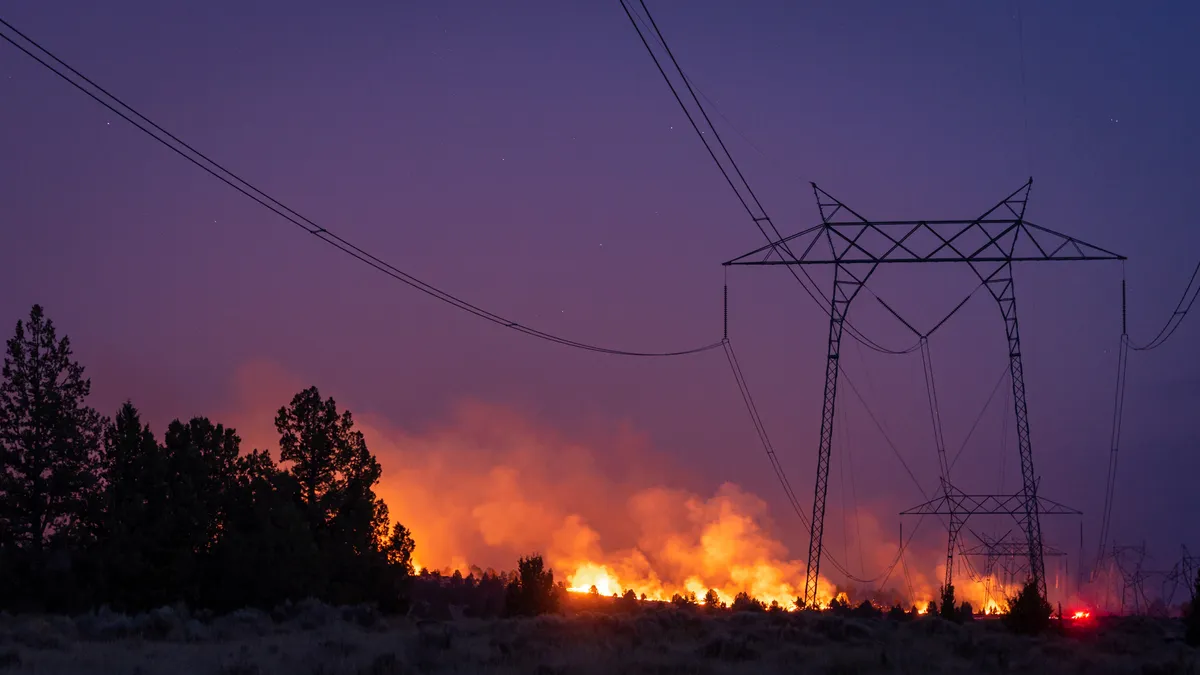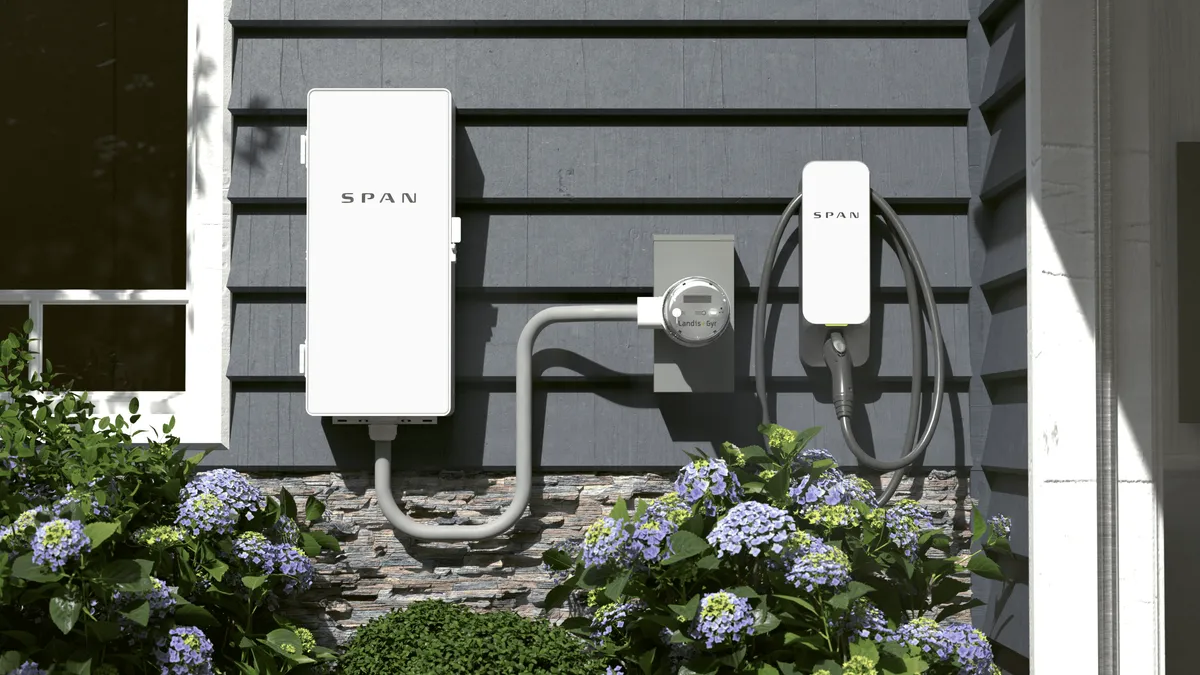Imagine, for a moment, that it’s the year 2050 and the energy transition is essentially complete. You live in a suburban cul-de-sac, and every vehicle you and your neighbors own is electric. Each house has rooftop solar panels, and a battery in the garage. Electricity flows in both directions — to customers, and from customers. And the last thing you want to happen, according to Alice Jackson, senior vice president and chief planning officer at Xcel Energy, is to bring your new EV home only to hear from your utility company that you can’t plug it in on certain days of the year.
“We have to envision that day, and think that the infrastructure we’re installing today has a high probability of [still] being there,” Jackson said in an interview last November. “But the world of 2050 is different from where we sit today. So how do we make sure the infrastructure we put in today meets the needs of 2050?”
At Xcel, the answer has been to create a whole new division dedicated to envisioning and planning for the utility systems of the future. Generation, transmission, distribution, and even natural gas service will be planned from within the same department, called the Integrated System Planning department, beginning this year.
In recent history, planning functions at utilities have become somewhat static, with projections based on slow, incremental growth or no growth at all, said Cristin Lyons, partner and energy practice leader at consulting firm ScottMadden. On top of this, regulators created incentives in the early 2000s for utilities that sectioned transmission planning and resource planning into separate fields, contributing to today’s structure where planning is often carried out by teams dedicated to a particular function such as distribution or generation, Lyons said.
Regulators have already done an about-face and increasingly require utilities to complete integrated resource plans that consider both power generation and demand. Today’s circumstances, however, may require an additional step of adding transmission, transportation, the transition from fossil fuels, and maybe even weather forecasting to the mix. And beyond this, Lyons said, is the question of speed — utilities need to share data and adapt their long-term plans much faster than they have done in the past.
This is where the idea of integrated planning systems comes into play. Going beyond merging multiple considerations into a single document, some utilities are now consolidating the company’s planners and modelers into unified teams in hopes of enhancing organizational innovation and flexibility.
New year, new planning team
At Xcel Energy, Jackson said in November, distributing the company’s planning functions across divisions dedicated to gas, electric and other services led to “incrementalism.” It wasn’t clear that the company had a unified, big-picture vision for the energy transition it had pledged to make.
“The concern was that we would end up rebuilding systems multiple times, or put something in place that would work for five years when they’re not typically five-year assets,” Jackson said.”We had to shift the question of, what do we need to solve today’s immediate problems, to how do we get to 2050, and what needs to change to get here.”
To do this, company leaders concluded they needed to move planning functions from resource-specific silos into a centralized division. The first 30 employees made the move late last year, and the rest of the team will join them by the end of this month. There will be no reduction in headcount, Jackson said — in fact, Xcel has determined they will need to hire additional staff to fill positions created within the new division.
In addition to the company’s transmission, distribution, generation and natural gas planning teams, the company is also moving standards functions from across the company into the planning division.
“We are deliberately creating a natural tension in moving the standards team that writes standards for construction, maintenance and design into the integrated planning,” division, Jackson said. “There has to be a close connection between planning and integrated operations. They are going to have to come back and give us feedback and say hey that grid forming inverter didn’t do what we thought so we have to modify the design.... This is why combining standards and planning is important. You no longer put in one size of cable, you put in a bigger size cable.”
This kind of re-organization may well make sense for a company like Xcel, which has strong net zero ambitions and offers both gas and electric services, according to Greg Litra, partner and head of energy, clean tech, and sustainability research at ScottMadden. At some point an integrated utility like Xcel will have to ask the question, do we expand the gas line or add more electric generation? he said. And they will need to have consistency and collaboration across the organization.
But adopting a more holistic planning process might look different at a company where collaboration requires a walk across the hall, Lyons said. And Xcel isn’t the only utility reconsidering its approach to planning — Jackson cited work by Salt River Project in Arizona as part of the inspiration for their recent reorganization.
The operational solution
Although SRP has also created what it calls an integrated systems planning team, it hasn’t moved employees from or to any new divisions within the company. Rather, designated employees from within existing divisions now meet to coordinate planning functions across the company.
The process started in 2019 as part of a project to evaluate how SRP could navigate the energy transition while maintaining reliability and affordability, Angie Bond-Simpson, director of integrated system planning and support at SRP, said in a November interview. They formally kicked off their new integrated system planning process in November 2021.
Beyond coordinating internal planning functions, the integrated system planning team also coordinates with a 22-member community advisory group that includes representatives from local environmental groups, tribal interests, low- and fixed-income communities and even public schools.
Between November 2021 and November 2022, the SRP planning team created roughly 40 different system plans evaluating how the electric system could evolve across 12 different case scenarios. In 2023, SRP plans to take these models back to the community advisory team for input and analysis.
While this is the current process, integrated system planning could look different in the future, Bond-Simpson said.
“This is the first time that we are doing integrated system planning — we’re on the leading edge of that,” Bond-Simpson said. “The first cycle of this is to create a strong foundation, understanding how additional programs above and beyond what we are currently doing might benefit customer value. But if you think about 2035, if we are relying on customer programs for a greater share of reliability and system needs, we need to understand those behaviors.”
Planning considerations
Xcel, SRP, and a handful of other utilities that have created dedicated planning teams are among the “early adopters” of this internal integration concept, Lyons said. But they aren’t the only utilities considering it. Lauren Shwisberg, carbon-free electricity principal at RMI, believes that a majority of major utilities have at least thought about integrating some of their internal planning teams.
“There’s still a lot of utilities that have not started to tackle this question,” she said. “If I had to draw an S curve of adoption, the line has started bending upward, but not to the tipping point where the majority of utilities have started integrated planning.”
Shwisberg believes all utilities will — or could — benefit from exploring more integrated planning teams. As the energy transition continues, she says, these teams will be a key tool to maintain affordable energy rates.
“We are coming to a point where if we don’t plan in an integrated fashion, we could find ourselves in a pathway that is significantly less affordable for customers,” she said. “We’re moving toward a future where information will need to flow across planning practices.”
But this doesn’t mean that integrated planning teams are a panacea, Shwisberg said. With just a handful of utilities still in the early stages of creating integrated teams, it’s still too early to say whether they’ll deliver the desired results for the companies that create them, Lyons said. And Shwisberg said she could envision some potential drawbacks — the perfect could become the enemy of the good within planning teams, with planners iterating the same plans over and over but taking far too long to come to a final conclusion on any one matter or question.
“The two risks are that you’re not going to meet all the different needs, or that you are creating a process that is quite unwieldy and therefore slow and unable to provide timely information,” Shwisberg said. “Those are the risks that an integrated planning department would have to manage.”
For most utilities, solving that particular problem might be a way off. So while the first generation of early integrated system planning adopters sort out the kinks, Shwisberg said other utilities can get the ball rolling by focusing on the first key questions — what benefits they hope to gain from integrated planning, and whether there are gaps in their current planning processes that an integrated team could fill.
“The purpose of planning is to accurately represent the cost, capabilities, impact and value of options that might be available in the timing horizon,” she said. “Striving toward a process or team that can do that is going to be really essential to moving as fast as we can while making investments that will result in an affordable electric system going forward.”






















